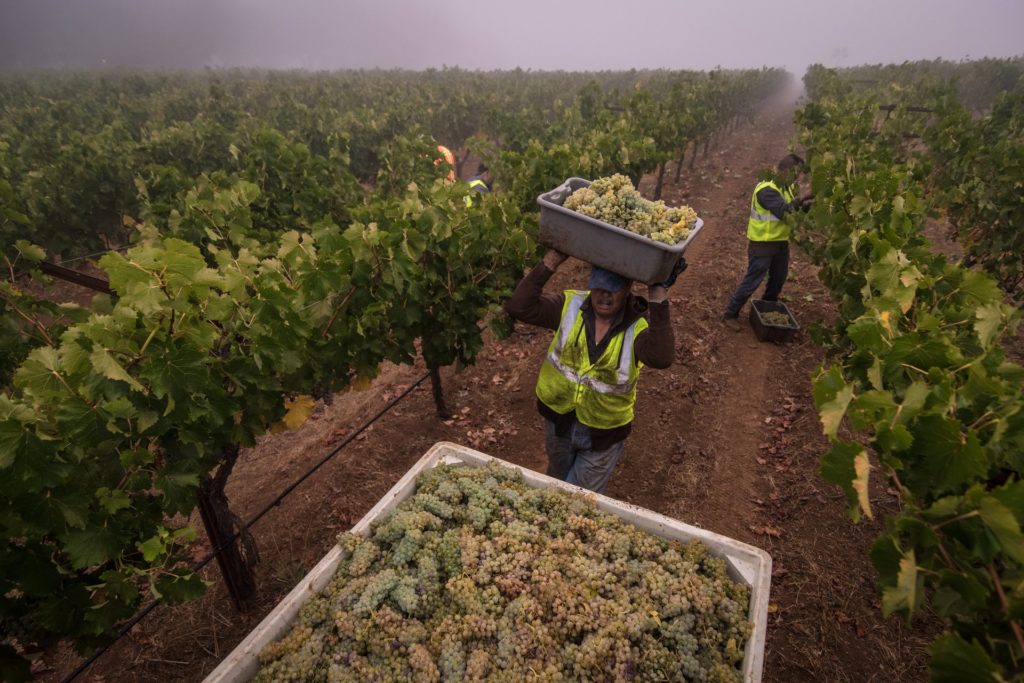But what makes Napa Valley such a unique place to grow wine? A few factors contribute to this region’s unique agricultural makeup:
- The region’s warm, sunny days and cool, foggy nights create a long growing season that allows the grapes to ripen slowly and develop complex flavors while retaining their acidity.
- The valley’s varied elevations, which ranges from sea level to about 2,600 feet, impacts the grape’s sun exposure, the availability of water, and access to cooling nighttime fog.
- There are more than 100 different soil types in Napa Valley, and these volcanic and alluvial soils are rich in nutrients and provide excellent drainage, which helps the vines produce high-quality grapes. The soil’s rocky nature forces the vines to struggle to find water and nutrients, which can lead to a diversity of flavors that develop deep within the grapes and ultimately influence the quality of the wines.

Napa Valley Harvest
Napa grape varieties
Cabernet Sauvignon is arguably the most important grape variety grown in Napa Valley, accounting for more than 40% of total vineyard acreage in the Napa Valley. The variety of elevations and microclimates help create grapes that have distinct flavors and characteristics unique to their place of origin. Ultimately these full-bodied, complex wines deliver rich flavors that have the ability to age gracefully for many years.
Chardonnay is another flagship grape variety in Napa Valley, accounting for about 20% of the total vineyard acreage. This grape produces a wide range of styles, from crisp and mineral-driven to rich and creamy, depending on the winemaking techniques used. Chardonnay grows with particular success in the calcium-rich soils and cool climate of the Los Carneros AVA, where it can ripen slowly.
Merlot has been a fixture in the Napa Valley since the 1970s, accounting for about 10% of the total vineyard acreage. Merlot from Napa Valley is known for its balance and elegance, and can be enjoyed on its own or as part of a blend.
Sauvignon Blanc is a white grape varietal that is particularly well-suited to the cooler climates of Napa Valley’s southern end. This grape produces crisp, refreshing wines with flavors of citrus, green apple, and tropical fruit, and is often aged in stainless steel to preserve its bright, fresh character. Occasionally winemakers choose to ferment and age Sauvignon Blanc in oak, adding additional layers to the wine. Famous winemaker Robert Mondavi popularized this style, calling it Fumé Blanc because it reminded him of Pouilly-Fumé.
Great Wine Capital: San Francisco — Napa Valley | United States
Photo credits: Bob McClenahan, courtesy Visit Napa Valley